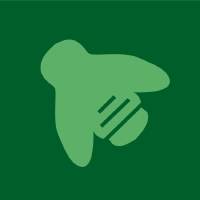Topic Menu
► Topic MenuTopic Editors



Biodiversity in the Azores: A Whole Biota Assessment
Topic Information
Dear Colleagues,
The Azores Islands form an isolated volcanic archipelago that is home to a unique biodiversity, with a high number of endemic species, unique evolutionary lineages and fascinating species interactions. Today, the native terrestrial and marine biotas of these species are affected by various drivers of global change, including land use changes and fragmentation (in the terrestrial biotas), the introduction of exotic invasive species, habitat pollution and climatic changes. Therefore, it is essential to improve our understanding of the drivers of the biodiversity observed in the Azorean Islands so as to inform and adopt the most appropriate conservation management practices for these terrestrial and marine ecosystems. In this Topic, we aim to incorporate diverse contributions covering areas such as taxonomy, species inventories and updated checklists, ecology, biogeographical analyses, evolutionary studies and conservation. Furthermore, we aim to assess the effects of conservation-related activities on the protection of Azorean biodiversity, as well as the value afforded to it, on the species and community levels. Both original research articles and reviews are welcome for submission to this Special Issue. We look forward to receiving your contributions.
Dr. Rosalina Gabriel
Dr. João Pedro Barreiros
Prof. Dr. Paulo A. V. Borges
Topic Editors
Keywords
- Azores
- Macaronesia
- island biodiversity
- invasion biology
- species interactions
- biodiversity hotspots
- endemic species conservation
- conservation threats
- deep-sea research
- invasive species impact and control
- biodiversity drivers
- conservation management
- global change
- Species Abundance Distribution (SAD)
- Species Area Relationship (SAR)
Participating Journals
| Journal Name | Impact Factor | CiteScore | Launched Year | First Decision (median) | APC |
|---|---|---|---|---|---|

Diversity
|
2.4 | 3.1 | 2009 | 17.8 Days | CHF 2600 |

Ecologies
|
- | - | 2020 | 19.8 Days | CHF 1000 |

Insects
|
3.0 | 4.2 | 2010 | 17 Days | CHF 2600 |

Plants
|
4.5 | 5.4 | 2012 | 15.3 Days | CHF 2700 |

Taxonomy
|
- | - | 2021 | 45.2 Days | CHF 1000 |

MDPI Topics is cooperating with Preprints.org and has built a direct connection between MDPI journals and Preprints.org. Authors are encouraged to enjoy the benefits by posting a preprint at Preprints.org prior to publication:
- Immediately share your ideas ahead of publication and establish your research priority;
- Protect your idea from being stolen with this time-stamped preprint article;
- Enhance the exposure and impact of your research;
- Receive feedback from your peers in advance;
- Have it indexed in Web of Science (Preprint Citation Index), Google Scholar, Crossref, SHARE, PrePubMed, Scilit and Europe PMC.

